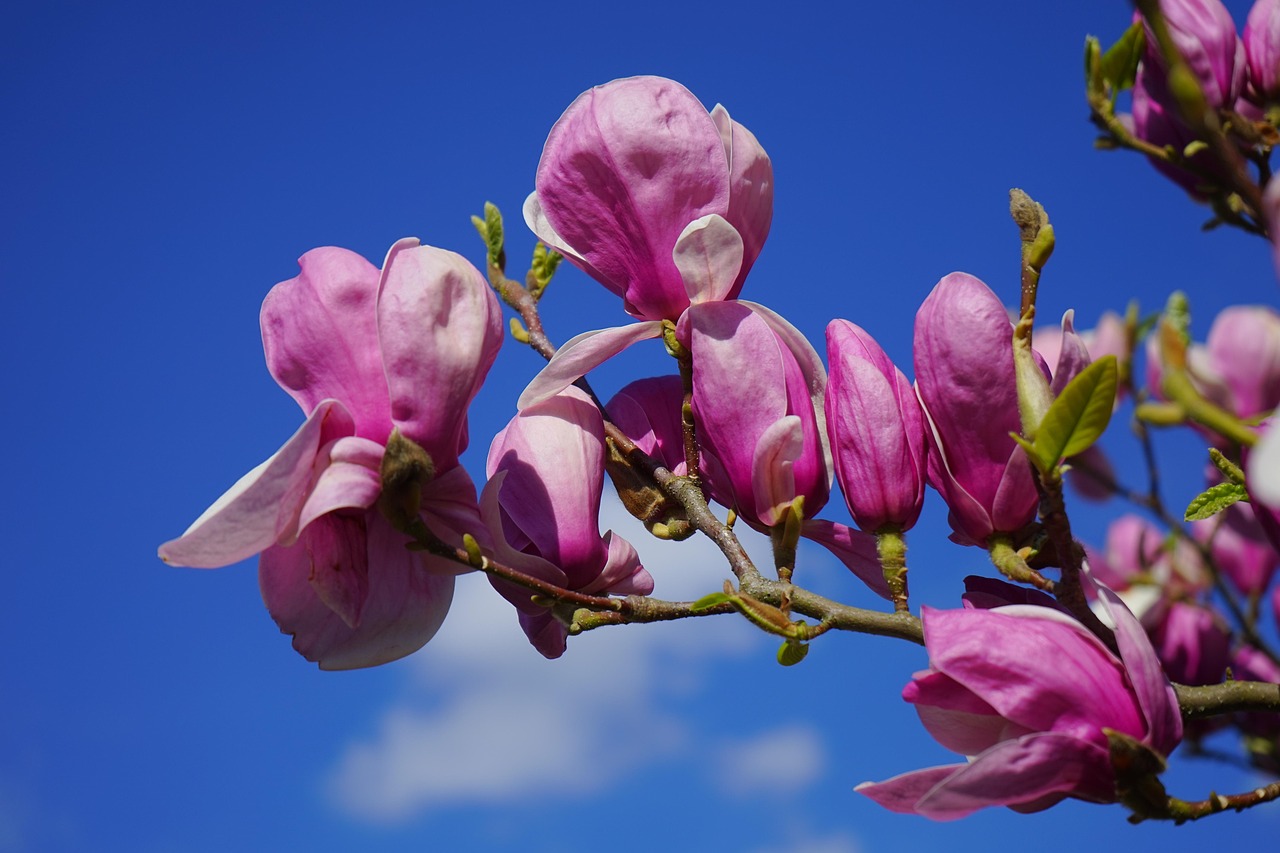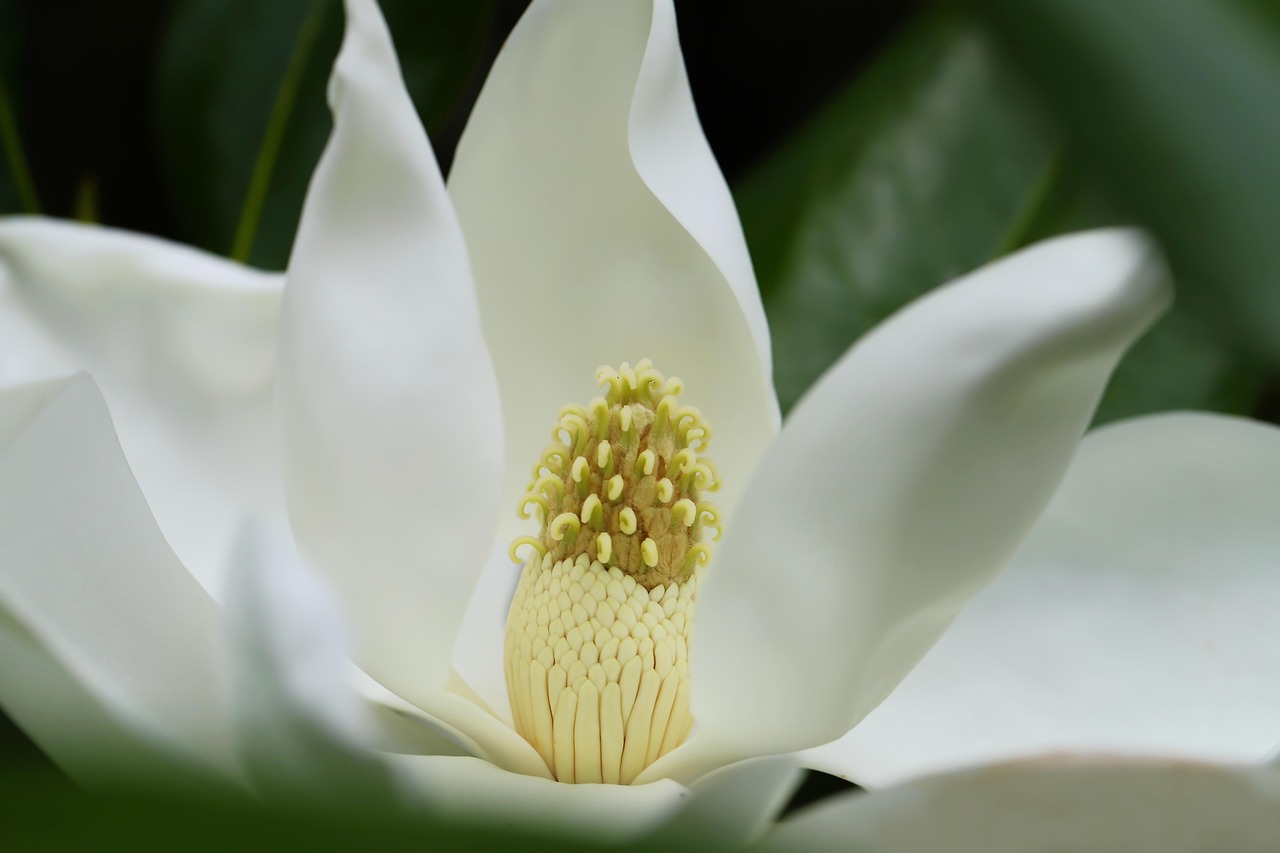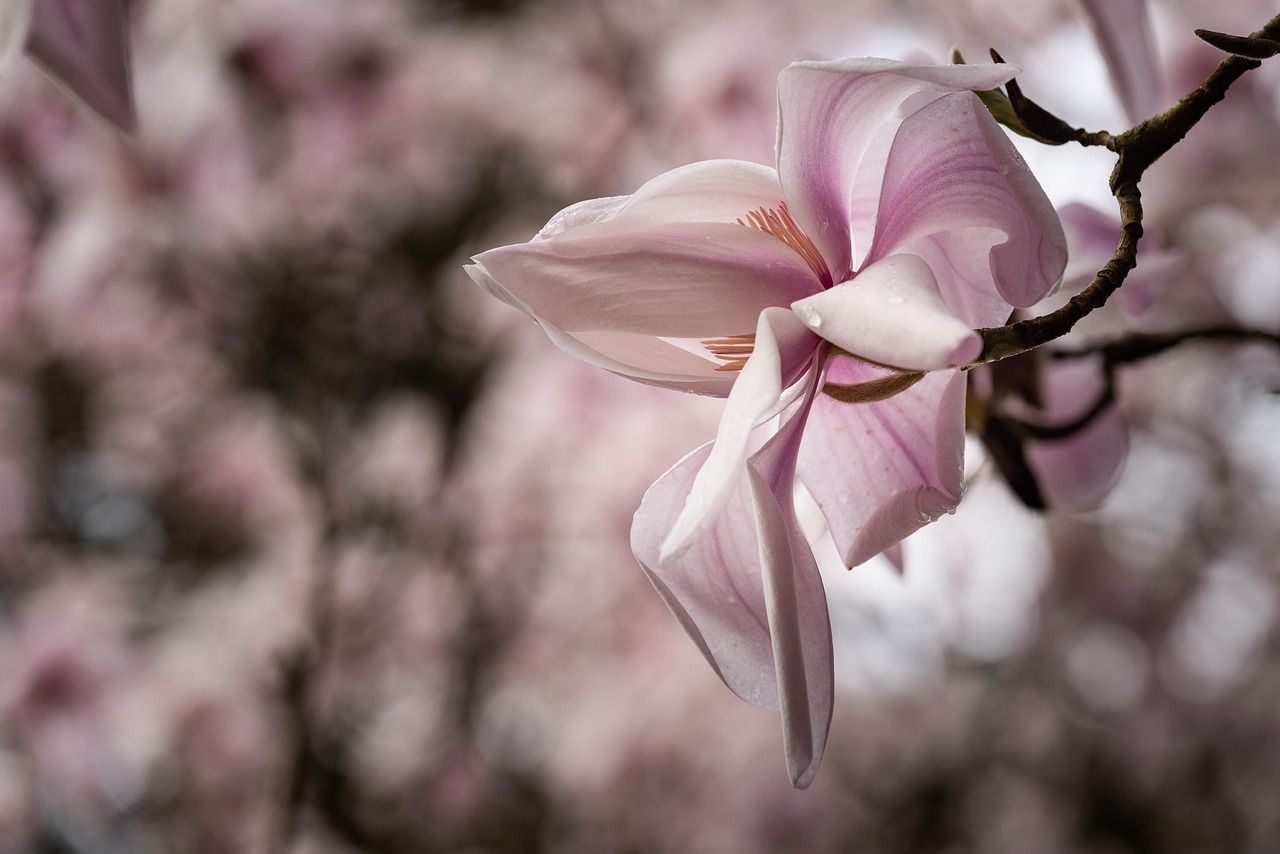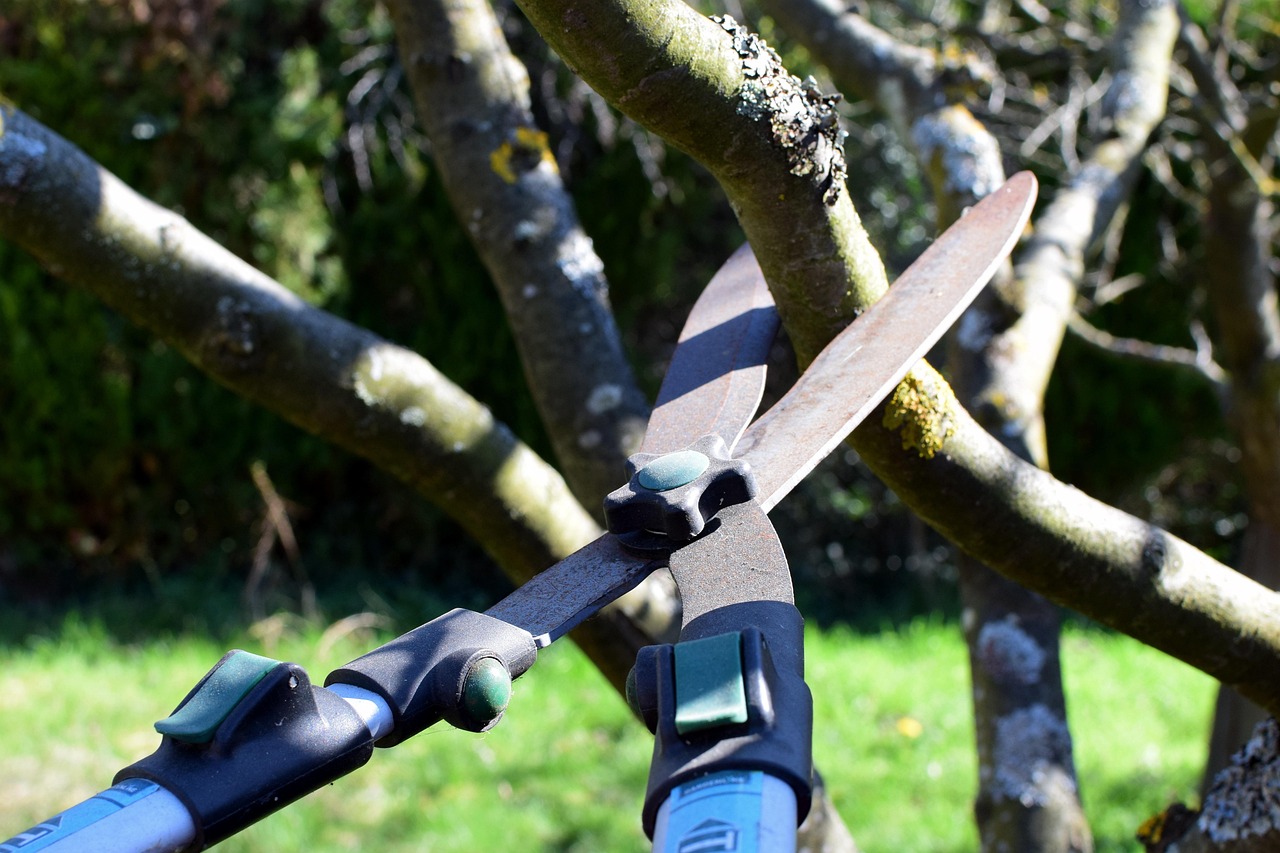Pruning a magnolia tree enhances its natural elegance by promoting healthy growth and maintaining its shape. Proper techniques can help control the size and improve flowering, leading to a more visually appealing tree.
Magnolia trees are celebrated for their stunning flowers and lush foliage. They are often a focal point in gardens and landscapes, admired for their beauty and grace. However, to maintain their majestic appearance, regular pruning is essential. Pruning not only helps in shaping the tree but also encourages new growth and abundant blooms. Understanding the specific needs of magnolia trees will aid in achieving the desired outcome.

Different species of magnolias may require varying pruning techniques. It is crucial to identify the specific type of magnolia before proceeding with any pruning. Most magnolias fall into two categories: deciduous and evergreen. Deciduous magnolias lose their leaves in the fall, while evergreen varieties retain their leaves year-round. Each type has unique growth patterns that influence how and when pruning should be done.
Understanding Magnolia Tree Growth Patterns
Magnolia trees grow in distinct shapes depending on their species. Some are upright, while others have a more spreading growth habit. Recognizing these patterns helps in planning effective pruning strategies. Here are some common growth habits:
- Cup-shaped: Trees like the Southern Magnolia typically have a rounded crown.
- Pyramidal: Species such as the Star Magnolia feature a more pointed outline.
- Spreading: Certain varieties grow wide, requiring careful management to avoid overcrowding.
Moreover, magnolias generally have a slow growth rate, which means that excessive pruning can lead to stress and hinder flowering. Therefore, it’s important to prune judiciously and avoid removing too much foliage at once.

When to Prune Magnolia Trees
The timing of pruning is critical for magnolia trees. The best time to prune depends on the species and local climate conditions. Generally, pruning should take place during late winter or early spring before the buds break. This timing minimizes stress on the tree and allows it to recover quickly as it enters the growing season.
Here are some specific guidelines on when to prune:
- Deciduous Magnolias: Prune in late winter or early spring.
- Evergreen Magnolias: Prune lightly after flowering to maintain shape.
- Flowering Considerations: Avoid pruning immediately after flowering, as this can reduce blooms for the following season.
Essential Pruning Techniques
Effective pruning involves specific techniques that promote healthy growth and preserve the tree’s natural form. Here are some essential methods:

- Thinning: Remove crowded branches to improve air circulation and light penetration.
- Heading back: Cut back branches to promote bushier growth; this technique is particularly useful for young trees.
- Removing dead or damaged wood: Always eliminate any dead or unhealthy branches to prevent disease.
Each technique serves a purpose, ensuring that the tree remains healthy while retaining its natural aesthetics. It is crucial to use clean, sharp tools for all cuts to minimize damage and promote healing.
Tools Needed for Pruning
Having the right tools is essential for successful pruning. Here is a list of tools that will make the task easier:
- Pruning Shears: Ideal for cutting small branches and flowers.
- Loppers: Useful for thicker branches that cannot be handled by pruning shears.
- Saw: For cutting larger limbs safely and effectively.
- Protective Gear: Gloves and safety goggles are recommended to protect against injuries.
Proper maintenance of these tools is equally important. Regular sharpening and cleaning help ensure effective cuts and prevent the spread of diseases.

Caring for Your Magnolia Post-Pruning
After pruning, magnolia trees require special care to ensure they thrive. Here are some tips for post-pruning care:
- Watering: Ensure the tree receives adequate water, especially during dry spells.
- Fertilizing: Apply a balanced fertilizer in early spring to support new growth.
- Mulching: Use mulch around the base of the tree to retain moisture and suppress weeds.
This care will aid in recovery from pruning stress while promoting robust health and beauty in your magnolia tree.
Common Magnolia Tree Issues and Solutions
Magnolia trees, while generally hardy, can face a range of issues that may affect their health and appearance. Understanding these potential problems and knowing how to address them is crucial for maintaining a thriving tree. Common issues include pests, diseases, and environmental stresses.
Pests Affecting Magnolia Trees
Various pests can invade magnolia trees, leading to damage and stress. Here are some of the most common pests:
- Magnolia Scale: These insects appear as small, waxy bumps on branches and can weaken the tree by sucking sap.
- Aphids: These tiny insects can cause leaf distortion and promote sooty mold growth.
- Spider Mites: Often found on the undersides of leaves, they can cause yellowing and leaf drop.
To manage these pests, consider the following approaches:
- Regular Inspection: Check your tree frequently for signs of pests.
- Insecticidal Soap: A natural remedy to combat soft-bodied insects like aphids and spider mites.
- Horticultural Oil: Effective against scale and other pests, horticultural oil can suffocate insects when applied properly.
Diseases That Affect Magnolia Trees
Disease can also pose a threat to magnolia trees. Some of the most common diseases include:
- Powdery Mildew: A fungal disease that creates a white powdery coating on leaves, often in humid conditions.
- Canker: This disease affects branches and stems, leading to dieback.
- Root Rot: Caused by overwatering or poorly drained soil, root rot can be fatal if not addressed.
Implementing good cultural practices can help prevent these diseases. Here are some tips:
- Avoid Overwatering: Ensure proper drainage in the soil around the tree.
- Prune Properly: Maintain good air circulation by pruning crowded branches.
- Fungicides: Use fungicides when necessary, particularly for powdery mildew.
The Importance of Soil Quality
The quality of the soil plays a significant role in the health of magnolia trees. Magnolia trees prefer well-drained, slightly acidic soil. Here are key factors to consider regarding soil quality:
- pH Level: The ideal pH for magnolias ranges from 5.5 to 6.5. Testing soil pH can guide amendments.
- Nutrient Content: Regularly testing for nutrients helps ensure the soil can support healthy growth.
- Organic Matter: Adding compost or organic mulch enhances soil structure and fertility.
Improving Soil Conditions
If your soil lacks the necessary conditions for magnolia trees, consider these steps to improve it:
- Aeration: Aerate the soil to improve drainage and root access to air.
- Add Amendments: Mix in organic matter or sulfur to adjust pH levels and enrich nutrients.
- Mulching: Apply a layer of organic mulch to retain moisture, suppress weeds, and add nutrients as it decomposes.
Mature Tree Maintenance
Caring for mature magnolia trees requires different considerations than younger trees. As the tree grows, its needs may evolve. Here are some essential maintenance tips for mature magnolias:
- Regular Pruning: Continue to prune annually to remove dead or crowded branches and maintain shape.
- Watering Needs: Mature trees may require deep watering during prolonged dry spells to encourage deep root growth.
- Pest Monitoring: Keep an eye out for signs of pest infestations that could affect larger branches.
Mature magnolias can also benefit from periodic fertilization. Use a slow-release balanced fertilizer in early spring to promote healthy growth without overwhelming the tree.
Seasonal Considerations for Pruning
The seasons can greatly influence how you approach pruning and care for your magnolia tree. It’s important to adapt your methods based on seasonal changes. Here are some seasonal considerations:
Spring Care
Spring is a crucial time for magnolia trees, as it marks the beginning of growth. During this season, focus on:
- Pruning: Finalize any necessary pruning before buds begin to open.
- Pest Control: Monitor for emerging pests as the weather warms up.
- Irrigation: Start watering regularly as temperatures rise.
Summer Maintenance
In summer, the tree is actively growing. Key tasks include:
- Mulching: Refresh mulch to retain moisture during hot months.
- Pest Management: Continue monitoring for pests and handle infestations promptly.
- Semi-annual Pruning: Light pruning may be necessary to maintain shape and remove any dead foliage.
Fall Preparations
As the weather cools, focus on preparing your magnolia for winter:
- Cleansing Debris: Remove fallen leaves and debris around the base to prevent disease.
- Irrigation Adjustment: Reduce watering as growth slows down.
- Final Pruning: Conduct any necessary pruning before winter sets in.
Winter Care
Winter is a time of dormancy for magnolias. During this period, ensure that your tree is protected from harsh conditions:
- Avoid Excessive Snow Accumulation: Gently remove heavy snow from branches to prevent breakage.
- Irrigation Monitoring: Check soil moisture levels occasionally, especially in dry spells.
This seasonal approach will help maintain the health and elegance of your magnolia tree throughout the year.
Enhancing Magnolia Tree Aesthetics Through Design
Pruning plays a crucial role in maintaining the natural beauty of magnolia trees. However, their aesthetics can be further enhanced through thoughtful design choices in landscaping. The placement and surrounding elements of a magnolia tree can create a stunning focal point in any garden or yard.
Choosing the Right Location
The first step in ensuring that your magnolia tree thrives while enhancing its beauty is selecting an optimal location. Consider the following factors:
- Sunlight Exposure: Magnolias prefer full sun to partial shade. Ensure that the chosen spot receives at least six hours of sunlight daily.
- Space for Growth: Magnolias can grow quite large, so select an area that allows for their mature size without overcrowding.
- Soil Type: Prioritize well-drained, rich soil to support healthy root growth.
Companion Planting
Integrating companion plants can enhance the visual appeal of magnolia trees. Choose plants that complement their flowers and foliage. Here are some excellent companion options:
- Azaleas: Their vibrant blooms can create a stunning contrast with magnolia flowers.
- Hostas: These shade-loving plants provide lush greenery that can accentuate the magnolia’s elegance.
- Ferns: Adding ferns can introduce texture to the landscape while thriving in similar conditions.
When selecting companion plants, consider their growth habits and ensure they do not compete with the magnolia for nutrients or space. The right combination can create a harmonious and visually appealing setting.
Seasonal Color and Interest
A magnolia tree can offer not only beautiful blooms in spring but also interest throughout the year. By incorporating seasonal color around your magnolia, you can maintain visual appeal year-round. Here are some suggestions for seasonal planting:
Spring Blooms
In spring, consider planting flowering bulbs and perennials that bloom simultaneously with your magnolia. Some great options include:
- Daffodils: Their bright yellow blooms add a cheerful touch.
- Tulips: Available in various colors, they bring additional vibrancy to the spring landscape.
- Primroses: These early bloomers can provide a colorful border around your magnolia.
Summer Foliage
During the summer months, focus on plants with lush foliage to complement the magnolia’s broad leaves. Some suitable choices include:
- Japanese Maple: Its delicate leaves add a unique texture and color contrast.
- Daylilies: Their long-lasting blooms contribute vibrant colors throughout the summer.
- Boxwood: These evergreen shrubs provide year-round structure and greenery.
Fall Colors
In the fall, consider plants that showcase vibrant autumn foliage to create a stunning backdrop for your magnolia. Options include:
- Chrysanthemums: Available in many colors, they bloom beautifully in fall.
- Asters: These late bloomers add splashes of color as other plants fade.
- Sedum: Their rich hues offer a striking contrast against fall foliage.
Winter Interest
During winter, while magnolias may be dormant, you can still create visual interest with evergreen plants and ornamental features. Consider these options:
- Pine Trees: Their tall stature adds height and year-round greenery.
- Holly Bushes: The bright red berries provide a festive touch during winter months.
- Sculptures or Garden Art: Incorporate artistic elements to enhance the landscape during the dormant season.
Sustainable Practices in Magnolia Care
Sustainability is becoming increasingly important in gardening and landscaping. Implementing eco-friendly practices while caring for your magnolia tree can contribute positively to the environment. Here are some sustainable approaches:
Water Conservation
Efficient watering practices can help conserve water while ensuring your magnolia tree remains healthy. Consider these strategies:
- Drip Irrigation: This system delivers water directly to the roots, minimizing waste.
- Basin Watering: Create a basin around the base of the tree to hold water during irrigation.
- Rain Barrels: Collect rainwater for use during dry spells, reducing dependency on municipal water supply.
Pest Management
Pest control methods can also be made more sustainable. Focus on natural pest management techniques such as:
- Natural Predators: Encourage beneficial insects like ladybugs that feed on harmful pests.
- Companion Planting: Use specific plants to repel pests naturally, reducing reliance on chemical treatments.
- Organic Pesticides: If necessary, opt for organic solutions that are less harmful to the environment.
Nutrient Management
Sustainable nutrient management ensures your magnolia tree receives adequate nourishment without harming the ecosystem. Here are some effective practices:
- Composting: Use kitchen scraps and yard waste to create compost, enriching soil naturally.
- Crop Rotation: Rotate planting areas to maintain soil health and reduce disease buildup.
- Mulching with Organic Materials: Applying organic mulch not only retains moisture but also adds nutrients as it decomposes.
By embracing these sustainable practices, you can enhance the health of your magnolia tree while contributing to environmental conservation efforts.
Additional Tips for Pruning Success
Pruning a magnolia tree can be a rewarding experience, enhancing both its beauty and health. To ensure success, consider these additional tips that complement the practices outlined in previous sections:
Understanding Tree Anatomy
Having a basic understanding of tree anatomy can significantly improve your pruning techniques. Here are key components to recognize:
- Branches: The main limbs of the tree that support leaves and flowers.
- Leaves: Essential for photosynthesis, leaves are crucial for the tree’s energy production.
- Bud: These are future leaves or flowers, and care should be taken not to damage them during pruning.
- Trunk: The central stem that supports the entire tree structure.
By recognizing these parts, you can make informed decisions about where to cut and which branches to prioritize during pruning.
Timing for Optimal Results
In addition to seasonal considerations, the timing of specific pruning actions can have a significant impact on the tree’s health and flowering. Here are some guidelines:
- Late Winter to Early Spring: The best time to perform major pruning is just before the growing season begins. This timing encourages robust growth and flowering.
- After Flowering: For some magnolia varieties, light pruning after flowering can be beneficial to shape the tree without sacrificing blooms for the next season.
- During Dormancy: Minor maintenance pruning can be done in late fall or winter when the tree is dormant, helping to prepare it for the upcoming season.
Using Technology for Pruning
In today’s digital age, technology can assist in maintaining your magnolia tree. Consider using applications or online platforms that provide:
- Pruning Schedules: Digital reminders for when to prune based on your specific region and climate.
- Pest Identification: Apps that help identify pests or diseases affecting your tree, along with treatment suggestions.
- Weather Tracking: Services that provide information on upcoming weather patterns, helping you to plan watering and care effectively.
Choosing the Right Magnolia Varieties
The success of your magnolia tree also depends on selecting the right variety suited to your climate and landscape. Here are some popular varieties to consider:
| Variety | Description | Best Growing Zones |
|---|---|---|
| Southern Magnolia (Magnolia grandiflora) | Known for its large, fragrant white flowers and glossy leaves. | Zones 7-10 |
| Star Magnolia (Magnolia stellata) | A smaller tree with star-shaped white flowers that bloom early in spring. | Zones 4-8 |
| Saucer Magnolia (Magnolia x soulangeana) | This hybrid produces large, tulip-shaped flowers in shades of pink and white. | Zones 5-9 |
| Cucumber Tree (Magnolia acuminata) | A large tree with cucumber-like fruit and yellow-green flowers. | Zones 4-8 |
Selecting the right variety ensures that your magnolia flourishes in its environment, providing beauty and elegance for years to come.
Final Thoughts
Caring for a magnolia tree through proper pruning and maintenance not only enhances its natural beauty but also promotes overall health and longevity. By understanding the unique needs of your specific magnolia variety, practicing sustainable gardening methods, and implementing thoughtful design strategies, you can create a stunning focal point in your landscape.
Regular inspection for pests and diseases, along with mindful watering and fertilization practices, will further support your efforts. Remember that each season brings its own set of tasks and considerations, so staying informed about your magnolia’s needs is essential.
Ultimately, with patience and care, your magnolia tree will flourish, showcasing its natural elegance and adding value to your garden or yard. Embrace the journey of maintaining your magnolia, and enjoy the beauty it brings throughout the seasons.
